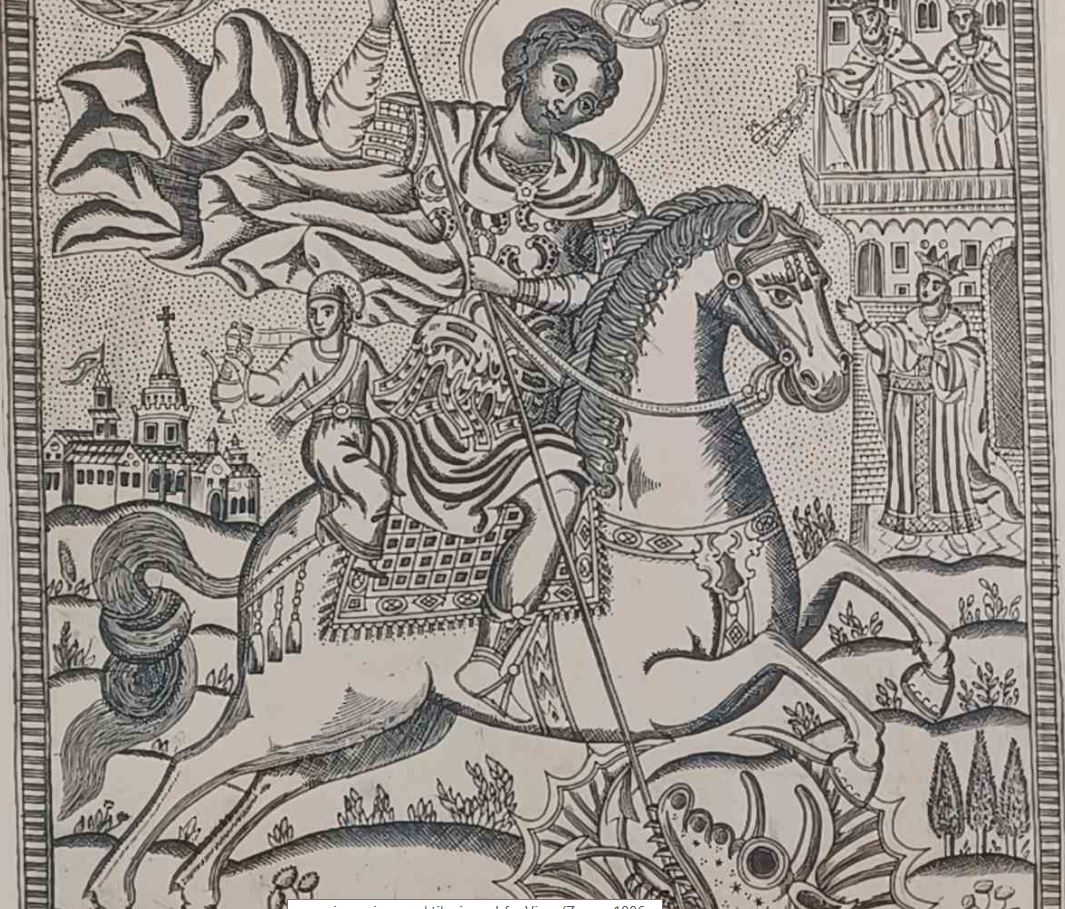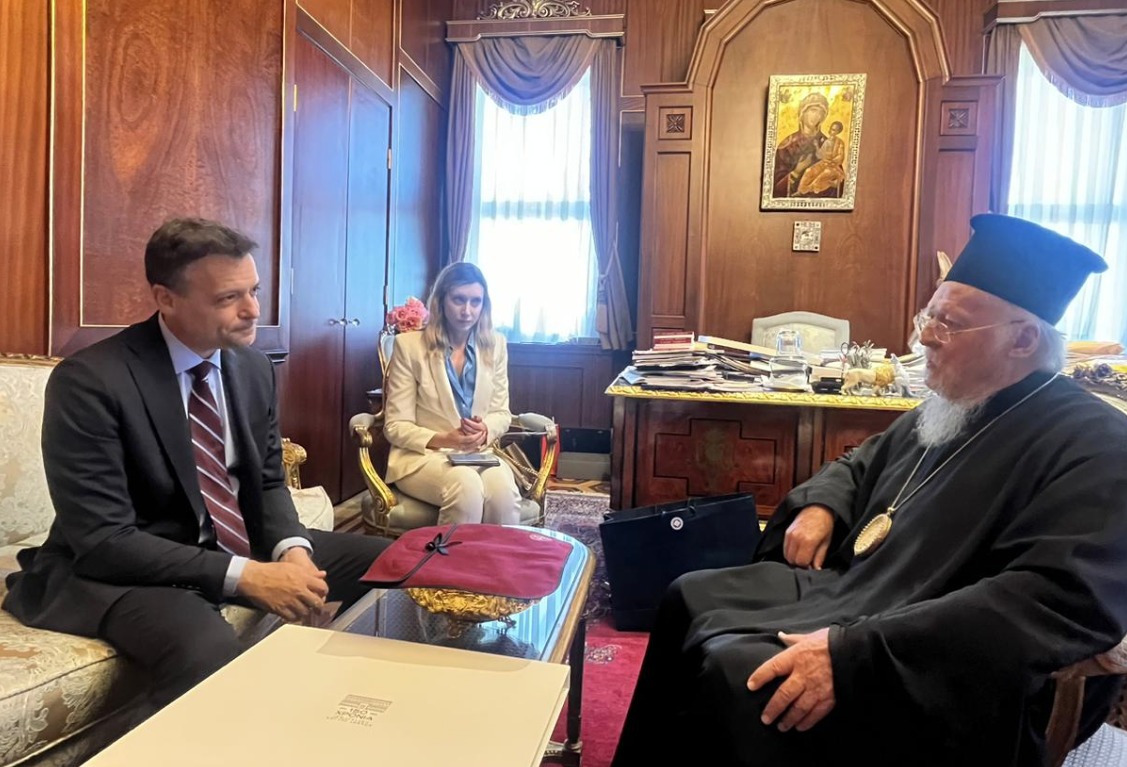Saint George, whose memory we celebrate every April 23 or the second day of Easter when it falls after April 23 – is one of the most popular, if not the most popular Saint, not only of the Greek Orthodox Church but also of many other Christian churches .
He is distinguished for his faith and his multiple martyrdoms from which he was miraculously saved until his beheading on April 23, 303 AD.
Saint George with scenes of his life and martyrdom (Hatzilambrinos Smyrnaios, 1824)
As a trophy bearer and liberator, Saint George gathers many wonderful stories and traditions, of which the one that refers to the slaying of the dragon and the rescue of the princess holds a special place. It is a monstrous dragon that guarded the water of a spring near the Silina region in Libya and would only let it flow freely if it was first given a human to eat. The inhabitants of the area, in order to have water, each time handed over to the beast someone whom they had chosen by lot. According to tradition, entire armies had confronted this monster, but to no avail. The clergy chose as a victim a princess who was saved by Saint George.
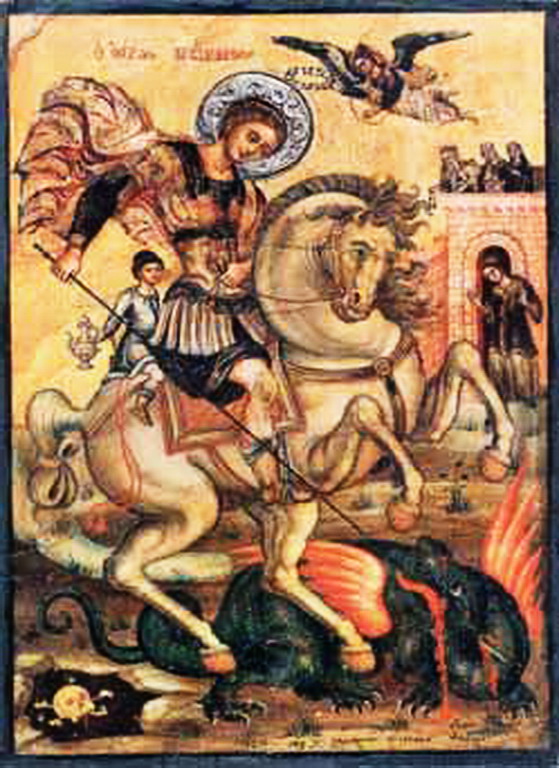
Saint George (Hatzilambrino Smyrna, 1824)
This so-called miracle of Saint George can be found in many stories, but it is also illustrated in the form of the Saint from the 12th century AD. and after.
As an example, we mention a folk song and present a great engraving of 1832 created on Mount Athos and its plate is preserved in Byzantine and Christian Museum of Athens.
The song of Saint George
It is a song that is sung and danced on the feast of Saint George, on Papadates of Preveza and is included in the collection of Easter songs that are sung and danced immediately after Easter, every day and up to the feast of the Life-giving Spring, Friday of Diakainissimos. The lyrics describe the miracle of the rescue of Vasilopoulas from the dragon.
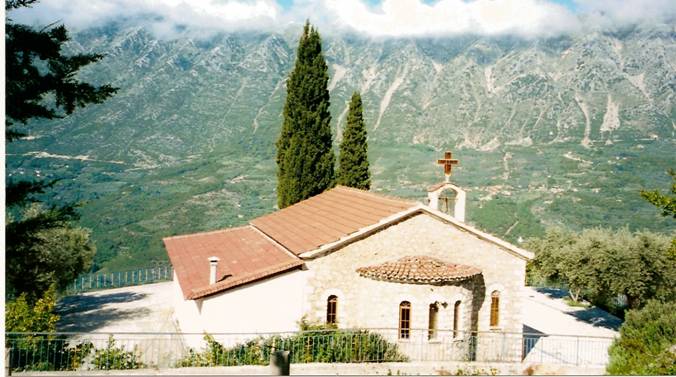
The surrounding Church of Agios Georgios in the Galini district of Papadaton Preveza
“Ahiiorghi Ahiiorghi, my master, in the fist* of a horseman the miracle where you performed I will tell about this wild beast the dragon the big splash of water he did not allow to drink at the festival he wants to eat a man and leave the water. And they cast lots to decide whose god should fall and the lot went and fell on a Vasilopoula. They took her and left her near the dragon and a young man appeared on his horse.
-Daughter, why do you grieve and sigh heavily?
– Get out of here, my child, lest the dragon eat you.
And the element started the daughter to eat. And the Saint chased him and killed the dragon and the water started and the sweet rivers,
– Come, my child, to the king to give you gifts
– Take my daughter to your house, go to your king, tell me daughter of your mother, tell your king, I killed the dragon and I am Saint George. To build a daughter with a church, to build Saint George, to build my image astride my horse, with a sword in my hand, to slay the dragon and you my daughter to sit near my horse, and glorify Christ and worship him.”
*grivos: the fisherman, gray horse.
Saint George on horseback, dragon slayer
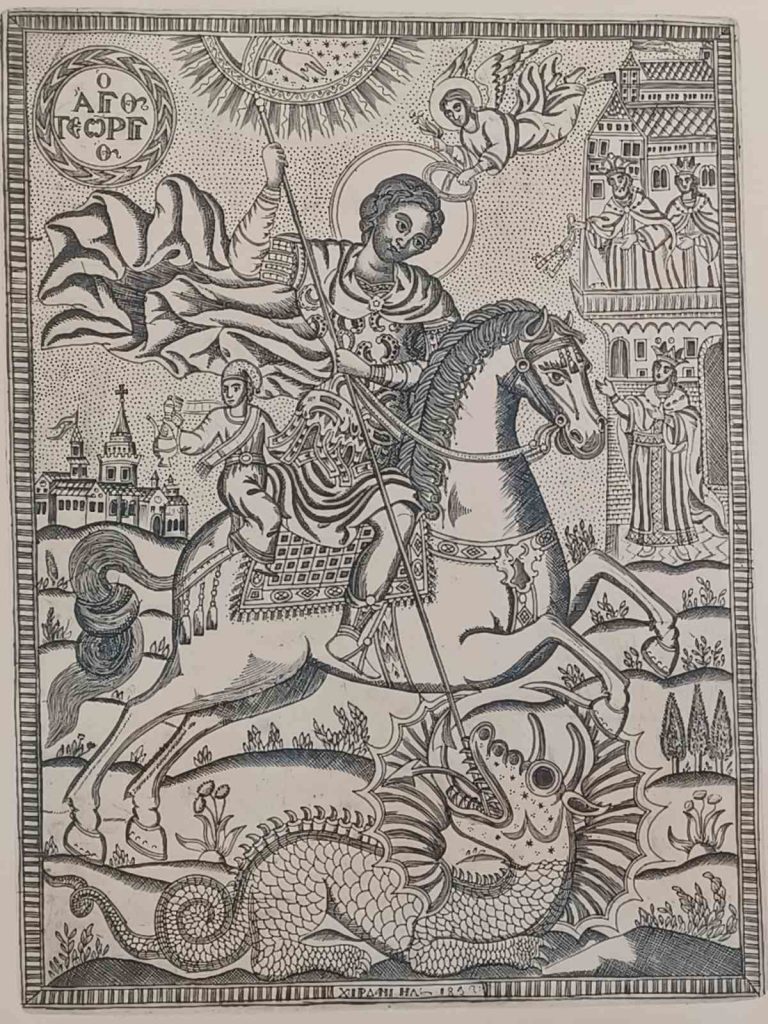
The miracle of Saint George with the rescue of Vasilopoulas from the dragon is illustrated among other images in the great engraving by the engraver Daniel, in 1832, on Mount Athos.
The main face of the plaque depicts a typical Agioritean rendition of the dragon slaying scene in a very elaborate engraving. St. George is represented on horseback in military uniform, having the little Christian slave from Mytilene with the jug in the horse’s shoes—he freed him from his Turkish master the moment he poured him wine—who, with rich undercoat and tail tied in a bow, gallops to the right.
There, in front of an arched door, stands the queen, and on the outside of the palace the king next to the queen offers the Saint, who is spearing a large winged dragon lying in front, on the first level, the keys to the city.
To the left, in the background of the countryside, is the large church dedicated to the Saint after the miracle.
Above, from the left, are drawn a) a disc with a floral frame and the agionymic inscription: O AGIOC GEORGIOC, b) a semicircular glory with the Hand of God blessing and c) a small angel crowning the Saint.
In the lower part of the simple lined outer frame, just below the representation of the dragon slaying, is engraved the artist’s signature with the engraving date of the work: HEIR DANIEL 1832.
The engraver hieromonk Daniel
The engraver of the plaque, hieromonk Daniel, is a well-known personality and appears to have created a large number of engravings in his time.
Sources: a) OUR SONGS (songs of Lazarus, Easter, Wedding and obituaries of the Papadaton community of Preveza) Publication of the educational, cultural association of the Papadaton of Preveza “0 Agios Kosmas” and b) Saint Etchings Publication of the Directorate of Publications of the Archaeological Resources and Expropriations Fund
#Saint #George #dragon #slayer #folk #song #engraving #Athos
